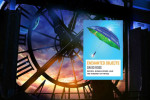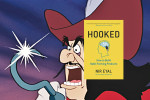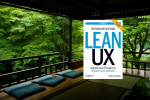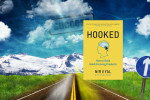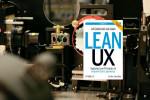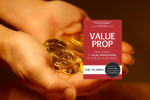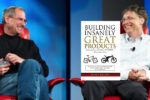The design of enchantment
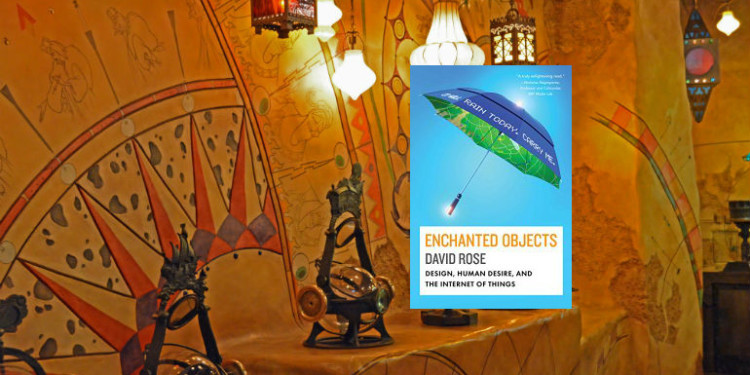
Design elements such as glanceability, gesturability, and affordability are key ingredients for enchanting ordinary objects. To increase the level of enchantment, move from augmentation and personalization to gamification and story-fication.
Enchanted Objects: Design, Human Desire, and the Internet of Things by David Rose
Enchanted Objects traces the desires which drive technologies to move outside of apps and onto us and into the objects we use in our daily lives. David Rose paints a future with many technology-enabled objects populating our lives in a quiet and informative manner. These are helpful things which take advantage of our underused sensory capacity and enable us to change our behavior based on immediate and ever-present feedback loops.
Other books in this same genre are Pull: The Power of the Semantic Web to Transform Your Business by David Siegel and Shaping Things by Bruce Sterling.
Rose writes to convince makers and designers that the “black slab” of glass, which currently bounds much of our technology, is not the only possible future. Rose wants to free technology from the pixelated confines of apps and tablets, phablets, and phones. He sees the stories that we tell as sign posts to powerful new objects which already exist within our lives.
The elements of enchantment
Rose’s recipe for enchanted objects is:
- An ordinary object we have in our lives today, augmented with technology and connected to internet services
- Passive sensing which precludes the need for manual recording of information
- Ever present, ambient information that is displayed with a goal of continual feedback
- Personal, emotional engagement with a social tie and incentive structure
Designing for subtlety
In contrast to many apps and current technology implementations, enchanted objects strive for subtlety. They aim for being unobtrusive, yet unavoidable. They live just above and below our liminal border. They change color, temperature, or produce subliminal sound effects. They take the form of glowing lights or changes in pattern, but don’t become intrusive. Enchanted objects don’t send you e-mails, SMS messages, or pop up badges on your start screen. You don’t need to fire up an app to check in or get status–the objects are near you and always active.
The seven abilities of an enchanted object
Rose elaborates on the design attributes of enchanted objects to guide designers:
Glanceability
Nearly all Rose’s examples are simple information displays that convey binary or single attribute spectrums. There is very low information density and only single pieces of information are displayed. The goal here is lighten the cognitive load and support fast decision making. Unnecessary details are eliminated.
Gesturability
Enchanted objects are meant to be handled and held. Physical interactions are incorporated into the object’s function.
Affordability
Because they do not attempt to squeeze multi-functional capabilities into a small space, enchanted objects are affordable. They are mostly single purpose and do not need to be designed for hundreds of use cases.
Wearability
Enchanted objects allow technology to escape the prison of the “black slab.” We can carry, embed, and wear technology within and around us.
Indestructability
Because they are meant for every day use and many are tools, enchanted objects are not as fragile as our screens and delicate multi-function processor devices.
Usability
Since they are not screens, the interface can be far simpler. Many objects waiting to be enchanted are already in use in our lives. When enchanted with the right measure of technology, they will not need excessive explanation.
Loveability
As we handle and bring enchanted objects into our lives, they will find a special place in our daily activities and personal narratives. They will be used and worn. The impersonal black slabs will make room for the next generation of super powers that infuse our daily routine.
The ladder of enchantment
A bathroom scale can move up Rose’s ladder of enchantment like this:
- Augmentation – the scale stores data
- Personalization – the scale knows who is on it
- Socialization – the scale publishes your weight to social networks
- Gamification – the scale employs levels and points to encourage healthy habits and weight goals
- Story-fication – the scale becomes part of a larger narrative around health and fitness
Enchanted Objects
Rose concludes the book by discussing how systems of enchanted objects can work together. Because they embody cloud-based services, enchanted objects can take advantage of data and APIs offered by other objects and services. Rose imagines small and efficient living spaces which can be transformed from one mode to another according to the time of day and activity. Enchantment is raised to the living space level as our domestic environment becomes intelligent and adapts to our needs through reconfiguration. Enchanted objects will serve social and community building needs by reducing apparent distances between people and supporting collaboration and idea exchange. Public and individual transportation will be guided by health goals and transform our cities into friendlier ecosystems that support walking, biking, and daily exercise.
Key attributes of the connected, environmentally responsible, and community-oriented future are:
- on demand – smarter devices and services will be less prone to waste if they are used and available when needed rather than always on
- calming – because they largely serve a single purpose can be put away and are not intruding and interrupting our lives, enchanted objects will reduce the level of noise and cognitive drain in our lives
- hackable – combining and using enchanted objects in new and unpredictable ways is a key value of this design approach; open interfaces and technologies already support this principle
- objects that learn – complementary to on demand, these new technologies will learn us and understand our patterns
- digital shadows – this is Rose’s term for embedded augmented reality; merchandise in a store, for example, will have prices and information available as virtual projections
